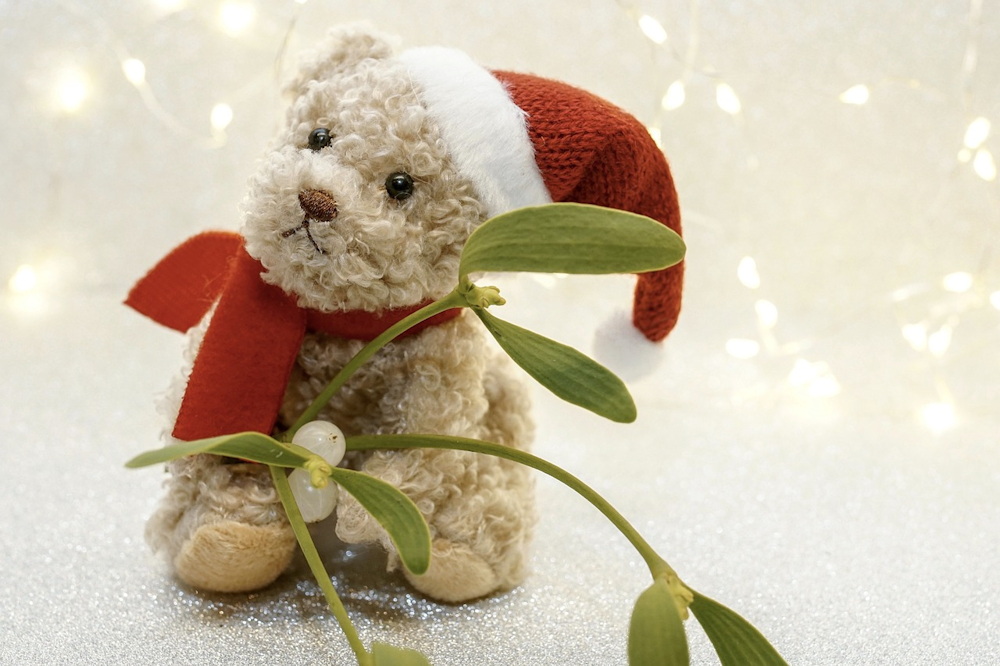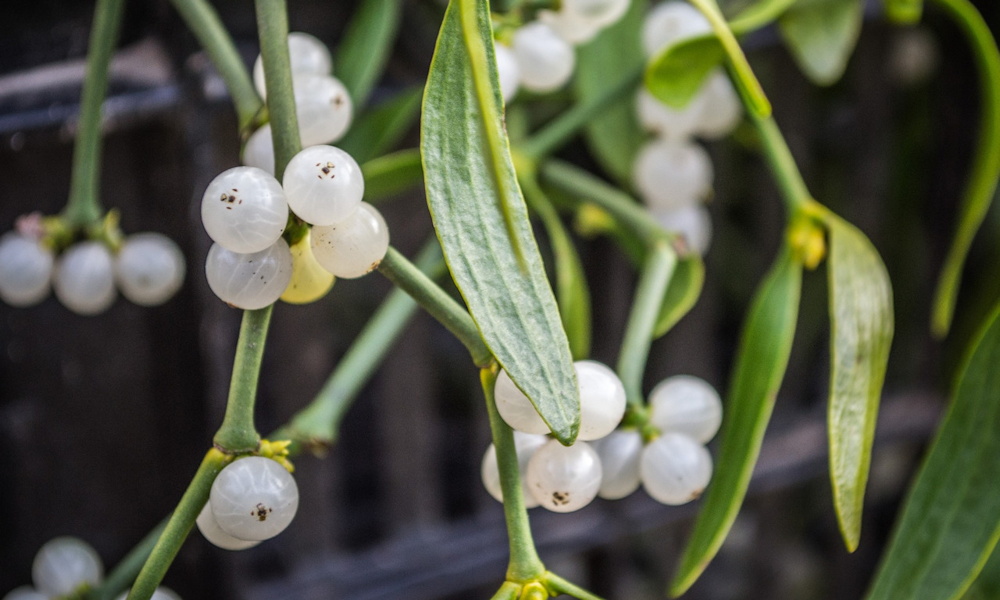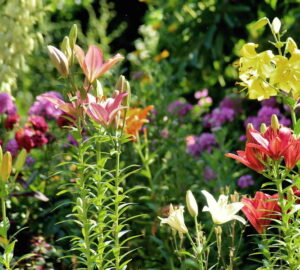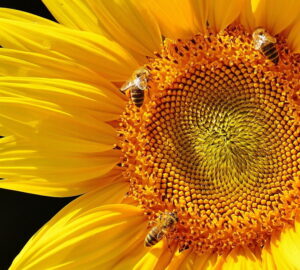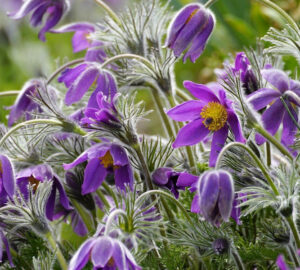As the snowflakes dance and the air fills with the festive aroma of cinnamon and cloves, mistletoe emerges as a symbol of yuletide joy. But where does this mystical plant come from? Originating from ancient druidic traditions, mistletoe, scientifically known as Viscum album, has a rich history entwined with winter celebrations.
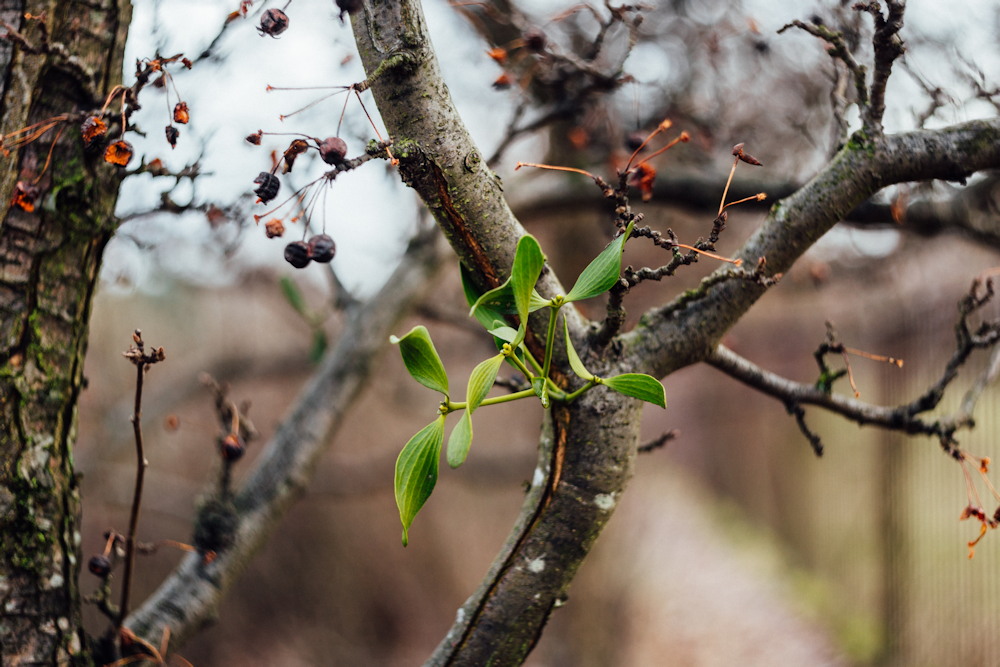
Hunting for Mistletoe: Nature’s Mysterious Hideaway
Venture into the heart of nature, and you might just stumble upon mistletoe nestled among the branches of deciduous trees. This parasitic plant, with its distinctive green leaves and pearl-white berries, finds solace in the cozy embrace of host trees like oak, apple, hawthorn, poplar, maple and pine. A true winter wanderer, mistletoe can be found across Europe and North America, inviting an air of magic wherever it goes.
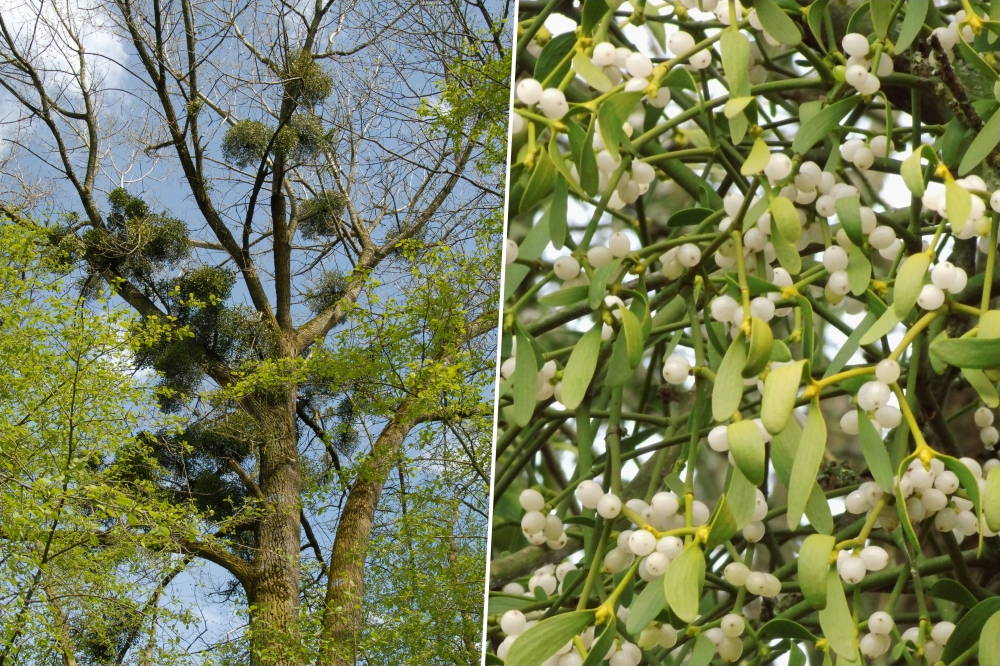
Unveiling the Elegance: A Closer Look at Mistletoe
Picture delicate green leaves and clusters of pearl-like berries dangling from branches like nature’s own ornaments. Mistletoe, with its characteristic dichotomous branching, exudes an understated elegance. This perennial plant thrives in the crisp winter air, creating an enchanting scene that captures the essence of the season.
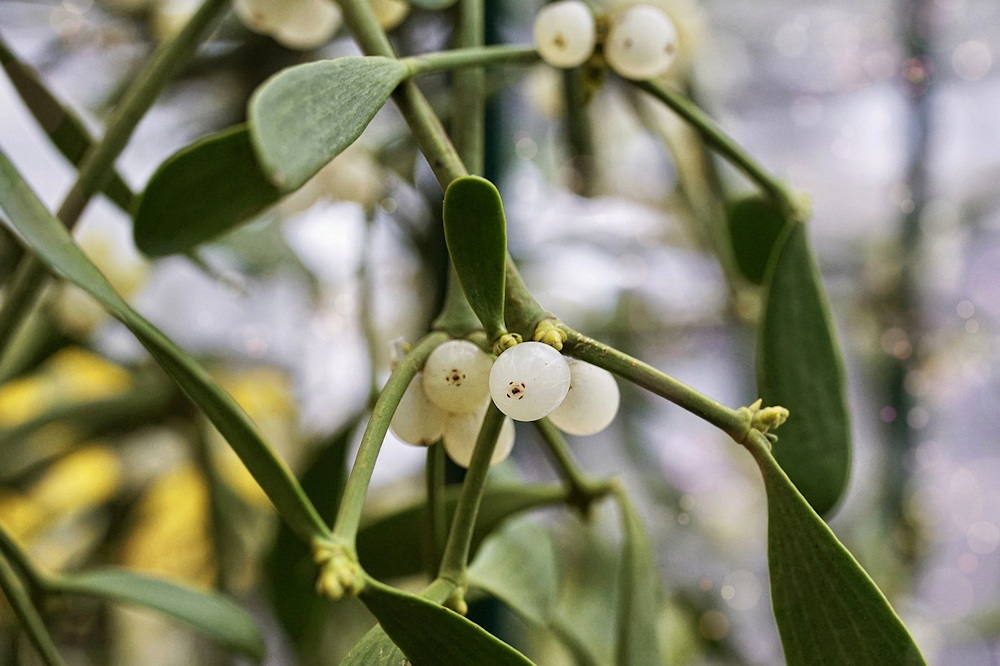
Adhesive Alchemy: The Sticky Secret of Mistletoe Berries
Mistletoe berries possess a sticky coating as a clever strategy for seed dispersal. The viscosity of this substance aids in adhering the seeds to the bark and branches of host trees, ensuring they remain securely in place. The stickiness also plays a pivotal role in attaching the seeds to the feathers and beaks of birds that consume the berries. As these birds travel and eventually excrete the seeds, the adhesive quality facilitates their attachment to new host locations, promoting mistletoe’s widespread distribution. Essentially, the stickiness of mistletoe berries is nature’s ingenious way of ensuring the plant’s seeds hitch a reliable ride for their journey to new habitats.

Decking the Halls with Mistletoe: A Tradition Takes Root
How did mistletoe become synonymous with festive romance? Legend has it that the druids, ancient Celtic priests, revered mistletoe for its ability to thrive in the harshest winter conditions. They believed it possessed mystical powers, bringing love and fertility. Over time, this belief evolved, and the tradition of kissing under the mistletoe was born, spreading joy and merriment during the holiday season.
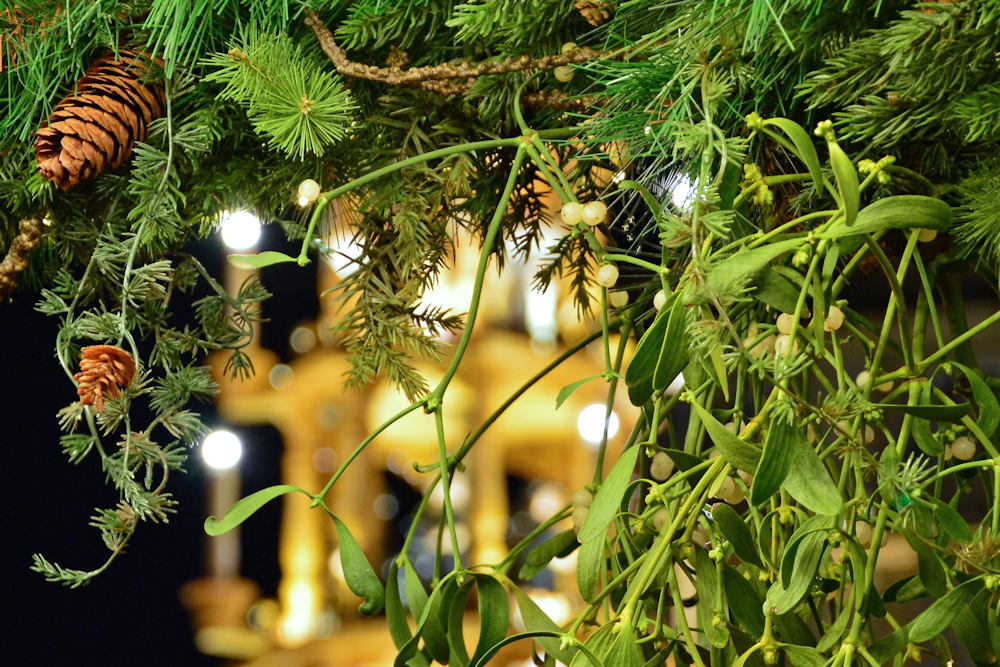
Adorn Your Abode: Mistletoe in Festive Decor
Transform your home into a winter wonderland by incorporating mistletoe into your festive decor. Hang sprigs from doorways, drape them over mantels or fashion whimsical garlands to infuse a touch of natural elegance. The simplicity of mistletoe adds a timeless charm to any holiday setting, making it a must-have for seasonal adornments.
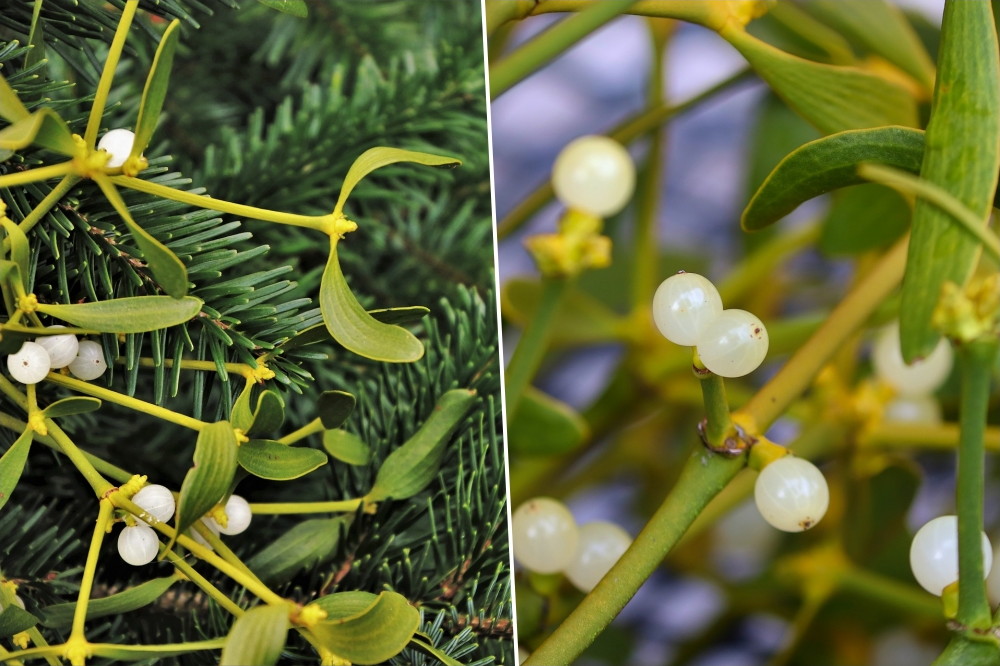
Harvesting Holiday Happiness: Where to Find Mistletoe
Eager to embrace the mistletoe tradition? Local florists, farmers’ markets and even some grocery stores stock up on mistletoe during the holiday season. Additionally, consider exploring wooded areas where mistletoe naturally thrives, giving you the chance to harvest a piece of winter magic for your own festive celebrations.
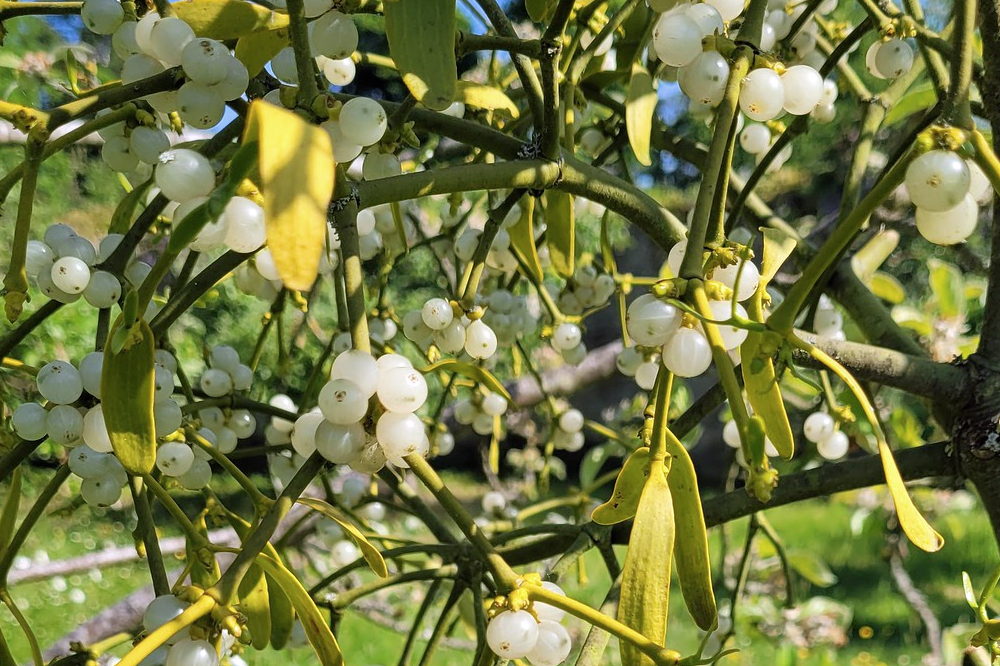
Fascinating Mistletoe Facts: Unwrapping Nature’s Secrets
- Symbol of Immortality: In Norse mythology, mistletoe is associated with Balder, the god of light and goodness. It became a symbol of love and immortality, which may have contributed to its use in holiday traditions.
- Ancient Medicinal Uses: Mistletoe has a history of being used in traditional medicine. However, caution is advised as some species can be toxic. Always ensure you’re using mistletoe from reputable sources.
- Bird-Spread Cheer: Mistletoe owes its widespread distribution to birds. Birds, attracted to the berries, unknowingly spread mistletoe seeds to new host trees, continuing the cycle of life.
- Sacred Druidic Plant: Druids considered mistletoe sacred and believed it held healing properties. They performed elaborate rituals, cutting mistletoe with a golden sickle during the winter solstice.
- Kissing Tradition Origins: The tradition of kissing under the mistletoe has roots in Norse mythology. Legend has it that Frigg, the goddess of love, vowed to kiss anyone standing beneath mistletoe after the death of her son Balder.
- Mistletoe Species Diversity: With over 1,300 species worldwide, mistletoe comes in various shapes and sizes. Each species has its own unique characteristics, contributing to the plant’s allure.
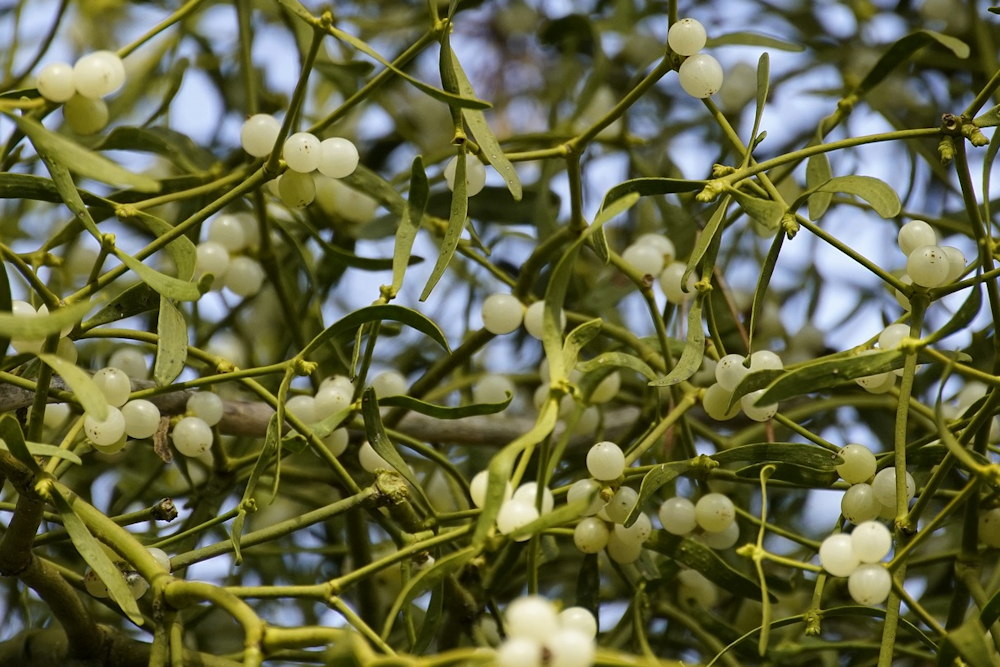
Closing Thoughts: A Mistletoe-Laden Holiday
As you deck the halls and embrace the warmth of the season, let mistletoe be the magical thread that ties your holiday traditions together. Whether adorning your home or stealing a festive kiss beneath its boughs, mistletoe brings nature’s enchantment into your winter celebrations, creating memories as timeless as the plant itself.
